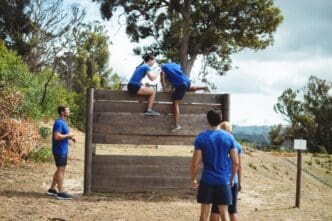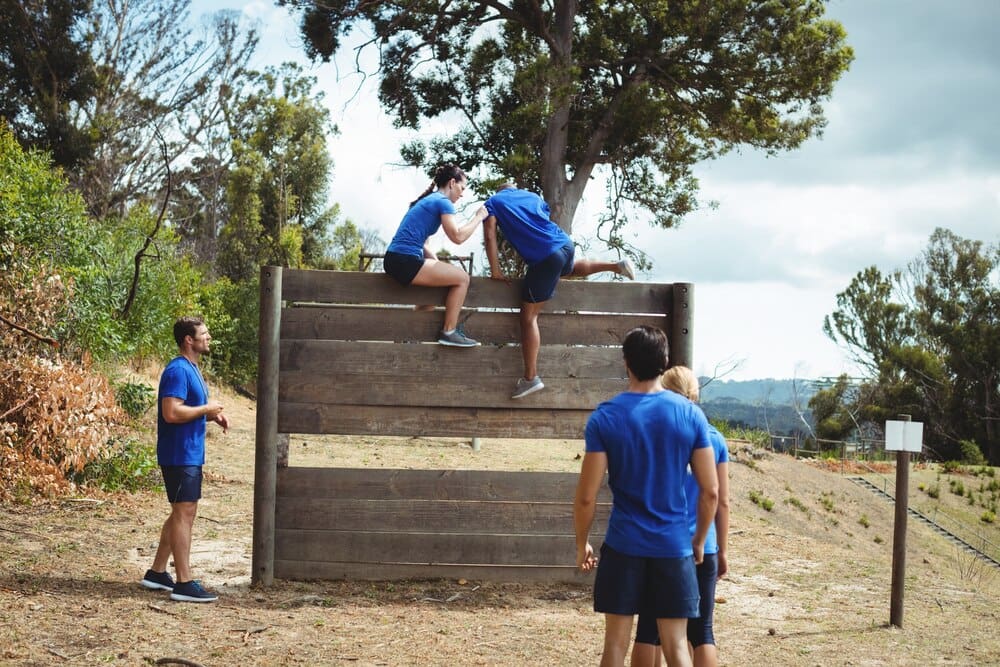For beginners in South Florida looking to start running, the idea of cross-country can seem both intriguing and intimidating, a sport often associated with rolling hills and crisp autumn air. Yet, this discipline of running over natural terrain—grass, dirt, and trails—is not only accessible but offers a uniquely rewarding way for anyone to build formidable endurance, strength, and mental grit. By embracing the region’s distinct landscape, from lush park trails to man-made hills, and preparing for its signature heat and humidity, new runners can discover the profound benefits of cross-country year-round, transforming their fitness journey from a monotonous pavement-pounding routine into a dynamic adventure.
What Exactly Is Cross-Country Running?
At its core, cross-country—often abbreviated as XC—is the practice of running over varied, natural terrain. Unlike the predictable, flat surfaces of a track or the hard asphalt of road running, cross-country courses are designed to challenge a runner with constant changes underfoot.
Imagine your run taking you across a wide-open soccer field, then onto a winding dirt path through a canopy of trees, and finally over a gentle, grassy slope. This is the essence of cross-country. The environment is as much a part of the race as the distance itself.
Distances for cross-country events can vary, but the 5-kilometer (3.1-mile) race is the standard for most high school and recreational competitions. The goal isn’t just to run fast; it’s to run smart. Runners must learn to adapt their pace and effort based on the surface, incline, and conditions of the day.
While it can be a solitary pursuit, cross-country has a deep-rooted team and community culture. The shared experience of navigating a tough course fosters a powerful sense of camaraderie, making it a fantastic way to connect with fellow runners.
Why South Florida Is a Unique Cross-Country Challenge
Running cross-country in a subtropical, sea-level environment like South Florida presents a special set of obstacles. However, overcoming these challenges is what makes local runners exceptionally resilient. The two primary factors to contend with are the lack of natural elevation and the pervasive heat.
The “Hill” Illusion: Finding Elevation
South Florida is notoriously flat, which might seem like a disadvantage for training for a sport that often features hills. Savvy local runners, however, know where to find their inclines. The most common solution is running bridge repeats—using the gradual slope of a causeway or overpass to simulate hill work.
Beyond bridges, the region is home to several parks ingeniously built on top of former landfills. These “mountains” of South Florida, such as Vista View Park in Broward and Dyer Park in Palm Beach, offer the steepest and longest inclines available, making them essential training grounds for serious cross-country runners.
Finally, don’t underestimate the power of the beach. Running on soft sand provides intense resistance, strengthening your ankles, calves, and quads in a way that mimics the effort of running uphill. It’s a low-impact, high-intensity workout that is uniquely Floridian.
Beating the Heat and Humidity
The year-round warmth is a blessing for consistent training, but the heat and humidity are formidable opponents. Acclimatization is key, but so is strategy. The vast majority of dedicated runners in South Florida complete their workouts in the very early morning or late evening, avoiding the oppressive midday sun.
Hydration is not just a suggestion; it is a critical component of survival and performance. This begins long before the run itself. Focus on hydrating throughout the day, and for any run lasting longer than 45 minutes, consider carrying water with you. After your run, replenish not just fluids but also electrolytes like sodium and potassium, which are lost through sweat.
Your choice of apparel also plays a significant role. Opt for lightweight, light-colored, and moisture-wicking fabrics that pull sweat away from your skin, allowing it to evaporate and cool you down. Avoid cotton at all costs, as it traps moisture and becomes heavy.
Getting Started: Your Beginner’s Toolkit
You don’t need a lot of expensive equipment to start cross-country, but a few key items will make your entry into the sport safer and more comfortable.
The Right Gear for the Terrain
Your most important piece of equipment is your shoes. While professional cross-country runners use featherlight shoes with spikes for gripping grass and dirt, a beginner does not need these. Start with a good pair of standard road running shoes, which will be perfectly adequate for the grassy parks and light trails you’ll begin on.
As you progress to more rugged or technical trails, you might consider investing in a pair of trail running shoes. These offer more aggressive tread for better grip, enhanced durability, and often include a rock plate in the sole to protect your feet from sharp objects.
Beyond shoes, focus on sun protection. A hat or visor, sunglasses, and a liberal application of sweat-proof sunscreen are non-negotiable in the Florida sun. A GPS watch is a great tool for tracking distance and time but isn’t essential to start; a simple stopwatch or a phone app works just as well.
Finding Your Pace: The Run-Walk Method
One of the biggest mistakes beginners make is trying to do too much, too soon. The run-walk method, popularized by Olympian Jeff Galloway, is the perfect way to ease your body into the demands of running. It involves breaking up your workout into running and walking intervals.
For example, you might start by running for one minute, followed by walking for two minutes, and repeating this cycle for a total of 20 or 30 minutes. This approach reduces the risk of injury, manages fatigue, and makes the process feel much less daunting. As your fitness improves, you can gradually increase the running intervals and decrease the walking periods.
Remember, in cross-country, your pace will naturally fluctuate with the terrain. Let go of the pressure to maintain a specific speed. Instead, focus on maintaining a consistent effort. Slow down on uphills and technical sections, and let gravity help you on the downhills.
Building Your Training Plan: A 4-Week Kickstart
Consistency is the foundation of any successful running plan. Here is a sample four-week plan designed to take you from the couch to confidently running on trails. Aim for three workout days per week, with rest or active recovery days in between.
- Week 1: Build a Base. Focus on consistency. Three times this week, head to a local park and perform a run-walk for 20-30 minutes. A good starting ratio is 1 minute of running followed by 2 minutes of walking.
- Week 2: Introduce Intensity. Keep two of your workouts the same as Week 1. For the third workout, find a small hill, bridge, or even a parking garage ramp. After a warm-up, run up the incline at a strong effort and walk back down. Repeat this 4-6 times.
- Week 3: Go a Little Longer. Make one of your weekly workouts a “long run.” Extend your run-walk session to 40-45 minutes, focusing on time on your feet rather than speed. Keep your other two workouts shorter, around 30 minutes.
- Week 4: Bridge the Gaps. On one of your runs this week, try to connect the running intervals. See if you can run continuously for 15-20 minutes at an easy, conversational pace. If you need to take a walk break, do so!
The Importance of Cross-Training
What you do on your non-running days is just as important. Cross-training activities like swimming, cycling, or strength training build supporting muscles, improve overall cardiovascular fitness, and, most importantly, help prevent the overuse injuries that can plague new runners.
Simple bodyweight exercises are incredibly effective. Incorporate two days of strength work into your week, focusing on movements like squats, lunges, glute bridges, and planks. These exercises strengthen the core, hips, and legs—the engine of a runner.
Top Beginner-Friendly Cross-Country Spots in South Florida
South Florida is dotted with fantastic parks perfect for starting your cross-country journey. Here are a few standouts in each county:
Miami-Dade County
- Larry and Penny Thompson Park: Home to one of the most well-known and historic cross-country courses in Miami, this park offers beautiful, shaded trails and wide-open grassy fields.
- Oleta River State Park: While known for its more technical mountain bike trails, Oleta also has miles of wider, flatter dirt service roads that are perfect for beginner trail running.
- Amelia Earhart Park: With vast grassy areas and a network of paved and unpaved paths, this park provides plenty of variety for a new runner.
Broward County
- Vista View Park: This is the premier destination for hill training in Broward. The park is built on a former landfill, providing sustained climbs and incredible panoramic views from the top.
* Markham Park: This massive park features a mix of everything: open fields, shaded trails along canals, and even a more rugged nature trail for when you’re ready for a challenge.
* Tree Tops Park: As the name suggests, this park offers wonderful shade from its mature oak canopy, with soft, winding trails that are easy on the joints.
Palm Beach County
- Dyer Park: Similar to Vista View, Dyer Park is another landfill-turned-hill that offers the most significant elevation in the county, making it a magnet for runners seeking incline work.
* Okeeheelee Park: With miles of multi-use paths winding around lakes and through woods, Okeeheelee has a dedicated 5K cross-country course and is a frequent host of local races.
* Jonathan Dickinson State Park: For a taste of “Old Florida,” this park’s sandy trails offer a beautiful but challenging run, perfect for building strength and stability.
Joining the Community: Finding Your Tribe
One of the best parts of running is the community. To stay motivated, find others to share the journey with. Local specialty running stores are excellent resources; they often host free weekly group runs and can connect you with coaches and clubs.
Search for local running clubs on social media platforms or websites like Meetup.com. Whether you’re looking for a competitive team or a casual social group, there is a club in South Florida for you. Joining a group provides accountability, safety, and a built-in network of friends who understand the runner’s mindset.
Finally, consider signing up for a local 5K. Having a race on the calendar provides a powerful source of motivation. Many local races take place on the very cross-country courses you can train on, giving you a tangible goal to work toward.
Embarking on a cross-country running journey in South Florida is a commitment to embracing your environment and pushing your own limits. The heat will challenge you, and the flat terrain will force you to be creative, but the rewards are immense. You will build a level of physical and mental toughness you never thought possible, all while exploring the hidden natural beauty of our region. Lace up your shoes, find a patch of grass, and take that first step. The trail is waiting.







